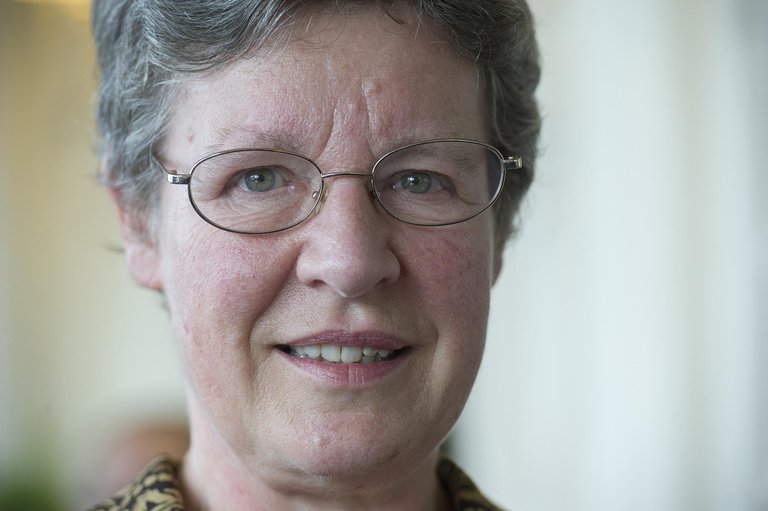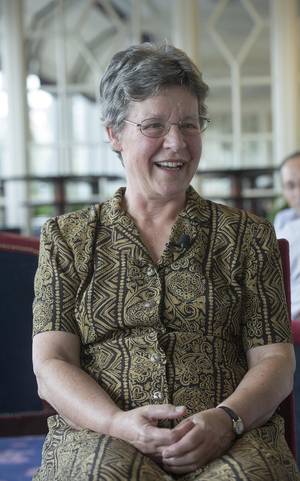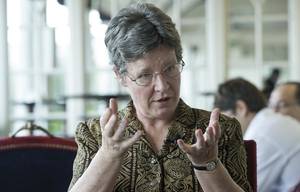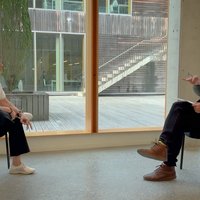"Finding the second pulse was the time of eureka"

At that time we just understood that the quasares were very far away. We knew they were strong radio sources, and that's why we wanted to know how they were so strong. They had to have a lot of light. That's why we looked very interesting, a pointer theme. But we did not know many quasares. And my thesis director told me that Antony Hewish had a way to find more quasares. For this we had to build a radio telescope. We had to do it manually. And so we start. And that telescope, as we used it, was very appropriate to search for pulsars. But, of course, at that time we did not know that there were pulsars. No trace!
Radio astronomy is completely different. During the day, the Sun has not so much strength in the sky. If we had radio eyes, the Sun would not look so bright and we can see the stars and galaxies behind it. Therefore, in radio astronomy, you can work both day and night. The clouds are not for this problem either: the radio waves cross the clouds. Therefore, in a climate like ours, both in Britain and here, you can work on radio astronomy.
The problem is that they are interferences, mobile phones, microwave ovens, etc. All these tools generate radio waves. And if the radio telescope is sensitive, it captures them. For that reason, we are forced to be far from the cities and places with many people.
We were close to Cambridge, but outside. At that time there were not so many interferences, it was easier. And, however, there was a problem for us.
No, it's true. It looked like an agricultural facility. In this case, plants grow. In Britain we grow hops in similar supports. Therefore, it did not broadcast a radio telescope. But there is a large radio telescope... well, it was already, handmade and shaped by manual.
That is. The old television antennas were somewhat similar. But in our telescope, instead of having an antenna, we had about 2,000, all joined together by wires. We use copper cables. Copper was very expensive, as it is now, and that is why someone has robbed us of copper. They came with Kuter and took all the copper.
The first sign was very curious and it was very difficult to believe that it came from space. In these cases you think that the team has failed in some way or has suffered an interference. But then we confirmed that it was not an interference or a failure of the team. Another telescope at the observatory also received the signal. And little by little we realized that anything was the source was in the Milky Way, beyond the Sun, beyond the planets, but in the Milky Way. It looked like a star. And then, three or four weeks later, I found a second in another direction. And then we started to think that it could be a new type of star when we discovered the second. A few weeks later we discovered a third and a fourth. It was another kind of star, but we didn't know how.
It is very difficult to know what to do when you have a single signal. You will hardly convince anyone of it. People will tell you that it has been a failure of the team or something you have not taken into account. Therefore, the best thing was to find the second. That was the time of the eureka, finding the second.
It was in joke. That "1" name was a joke; we also have LGM2, 3 and 4, and there are no four green hombrecillos that send signals to this citrine Planet Earth with that crazy frequency and through a nonsense technique. The name was joke, but now I regret having made that joke.
That is. Crazy theorists, yes, had already said that there could be stars of this type, but that could not be seen. No one paid any attention to them. But they were right.
No. It took six months to discover it. The first bracelet is found in the nebula of the Crab. And we put it in detail, until we could see how the pulsar slows down little by little. If a pulse is slow, it means rotation. If I were vibrating, with time it would accelerate. But he was slowing down and therefore turning. It should be a neutron star. However, it takes six months to reach this conclusion.
The name pulsar was invented by a scientific journalist. When we published, the first press article aroused great interest and we had to do many interviews. One of the interviewers was the daily Daily Telegraph, Anthony Michael. He asked us: "How do you call this thing?" We don't even think about it. The quasar name already existed and he proposed to press. A star that emits radio pulses: a pulsar. He wrote on the slate to see the aspect of the word and it was fine. And he stayed with the name of pulsar.
Rosalind Franklin died very young. When his work was awarded the Nobel prize, he was dead. If you've been alive, I don't know if you've been awarded the prize or not. We can only speculate. On the one hand, the Nobel Prize has not been granted to many women. But on the other hand, in my generation, we were not many female researchers. I hope there will be much more in the future.
Yes it is possible. Surely you will be right for how things were.
--> The story of Jocelyn Bell Burnell is on page 40.
--> See interview to Teknopolis.
--> Listen at Nortekon Ferrokarrilla.
Buletina
Bidali zure helbide elektronikoa eta jaso asteroko buletina zure sarrera-ontzian












